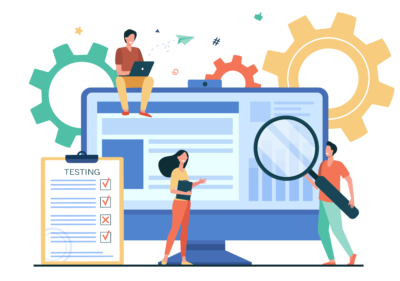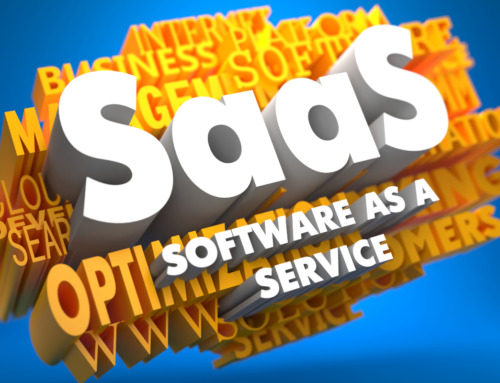Are you a tech-savvy person? If yes, I know you are constantly searching for knowledge about new things launched in the tech industry. You also want to keep up with the fancy tech trends. Even if you are not a software developer but are curious about how things work in developing softwares, how creative ideas are turned into real-time applications, this is a quick guide for you, software developers, to enhance as well as adding some drops of tech information into your ocean of knowledge about the software development life cycle process.
What is SDLC?
The Software Development Life Cycle (SDLC) is a defined process for developing high-quality and budget-friendly software applications. SDLC is also known as the blueprint for developing softwares. The SDLC methodology consists of these phases. Every phase is equally important for developing the software. Organizations follow these phases for the smooth and efficient development of software. Right from the beginning of software development to deployment, every stage is as essential and interdependent on one another.
There are six methodologies, also known as methods of SDLC. They are as follows: Waterfall model, Iterative model, Agile model, Lean model, Spiral model, and DevOps. These models serve the same purpose, but they are different from each other. This model assures the customer that high-quality software is built in a cost-effective way and in a short period.
Following are seven phases in the Software Development Life Cycle –
- Requirement analysis
- Planning
- Designing
- Implementation
- Testing
- Deployment
- Maintenance
Let us get familiar with each of the phases –
-
Requirement Analysis
Requirement analysis is the first phase of the software development life cycle (SDLC). The organization communicates with the client and understands all the details about the software product that they require. In this process, the foundation of software is analyzed, and what needs to be done is instructed to the development team.
-
Planning

Planning is the second phase of the software development life cycle (SDLC). This is a crucial step for software development. Good planning always results in a good outcome. Therefore, in this process, we set up goals and small targets that can be achieved while developing the software. The creation of the project plan is one of the steps of the planning phase. Also, we have to define the scope of the project (software) in the planning phase.
-
Designing
Designing is the creative phase of the software development life cycle (SDLC). In this phase, the technical details are discussed with the technical team and the stakeholders. Various aspects such as milestones, budget, the capability of the group are reviewed and then good to go for the next stage. Risks are identified, measures are to be taken to resolve issues, and risks are also a part of the designing phase. In short, the design phase is the sketch of the actual software product.
-
Implementation
Implementation is the phase of the software development life cycle (SDLC) where the software is implemented. Actual functioning of the software is shown in this phase of SDLC.
-
Testing

Tiny people testing quality assurance in software isolated flat vector illustration. Cartoon character fixing bugs in hardware device. Application test and IT service concept
Testing is one of the crucial phases of the software development life cycle (SDLC).
The testing part is carried on by the software testers. They break down the system and perform various tests such as system testing, integration testing, acceptance testing, performance testing. The testing team performs manual as well as automation testing. The testing phase helps to identify the bugs from the system and resolve them on time. If bugs are not fixed on time, they may, later on, cause significant damages to the software product.
-
Deployment
When all the bugs are resolved, and the system does not have any faults. This phase comes into action. Deployment is also the end stage of SDLC because the end product is deployed and handed over to the customer. User manuals, demo and instructions are given to the users with the software product.
-
Maintenance
Maintenance is the last phase of the software development life cycle (SDLC). It is the support given by the technical team in case the software requires any upgrades, fixtures or any repairs. During this phase, there is a possibility of finding bugs, so resolving them is significant.
Following are some of the best SDLC Tools used in the industry –
- Confluence
- Jira
- Git
- Bamboo
Let us dive into the details of these tools –
- Confluence
Confluence is one of the powerful system tools that help development teams work together and faster to get maximum results. This tool offers teams attractive functions such as creating teams, collaborating and scheduling, and organizing the work. This all can be maintained under one dashboard.
This is a powerful tool for employee management. Teams can save a lot of time by working together. They can also share announcements and give instant feedback. Confluence enables an open and connected structure that allows a proper flow of information within the organization.
This tool enables sharing information or discussing ideas through chat functions, and notifications help you get notified when a teammate sends you a message. Employees can share, contribute their ideas and get feedback instantly for their progress using confluence.
-
Jira
Jira is one of the most effective tools for developers who use the agile model. Projects can be managed with ease using Jira. The development team can plan, track and develop influential projects with the help of this tool.
Team members can share concerns about the project, issues, and priorities regarding the project and improve their performance.
It can integrate easily with other tools like Confluence, Bitbucket and many more. By using Privacy Shield and GDPR, all your data is secured with Jira. Your information is stored in an encrypted format during the transit as it is more helpful for agile experts and experts.
The tool allows agile teams to have a flexible work plan which is efficient and more accurate.
-
Git
Handling small and large projects becomes easy with the help of Git. This tool is helpful for IT professionals and software development teams. Git is free and open-source software.
It is efficient and quick for project management. Compared to other tools such as Subversion or Perforce, it has collaborative workflows, a staging area and cheap local branching.
Main Features Of Git :
- It is fast and can handle all team operations locally. There is an advantage of speed on centralized systems if they require communication with other servers located outside.
- It is coded in C language. This is why it has few overheads when it works with higher-level languages.
- One of the powerful features is branching and merging. This feature helps Git to stand out from other SCM available in the market.
- Multiple as well as independent branches can be created. You can also delete the old branches.
- The staging area allows teams to format and review the task before even completing it.
- It is a distributed SCM.
- You can clone the whole source code by using Git.
- Backups are also provided in the system.
- It uses a secure data model, so your project is completely safe.
-
Bamboo
Bamboo software can be integrated with Bitbucket and Jira Software. This allows teams to have complete traceability on pull requests, builds and distributions. This tool enables automated forms, releases and tests in a single workflow. It can be used as CI and build servers during coding for softwares as testing is an integral part of the software development process. Bamboo can run automated tests to detect bugs easily. Continuous deployments of projects can also be done using this tool.







Leave A Comment